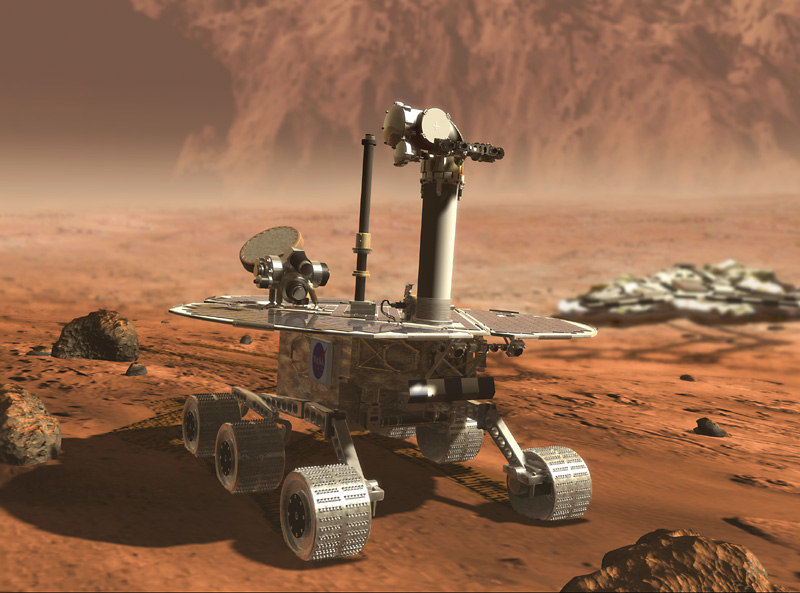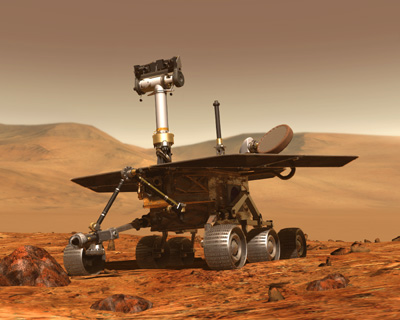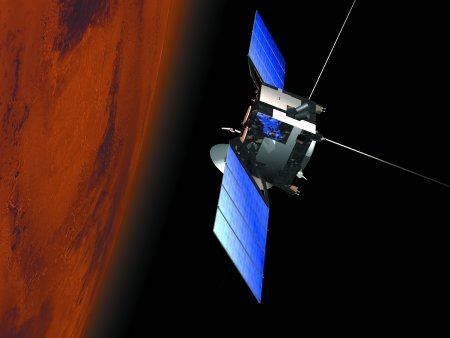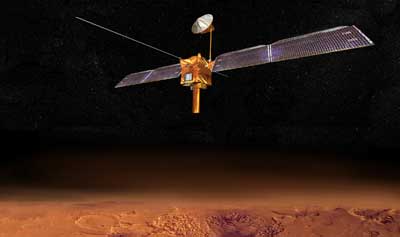
The three primary goals of future Mars explorations are

In 2003, two powerful new Mars rovers are on their way to the red planet. With far greater mobility than the 1997 Mars Pathfinder rover, these robotic explorers will be able to trek up to 100 meters (about 110 yards) across the surface each Martian day. Each rover will carry a sophisticated set of instruments that will allow it to search for evidence of liquid water that may have been present in the planet's past. The rovers will be identical to each other, but will land at different regions of Mars.
These rovers will land in a method similar to that of the Mars Sojourner Rover. However, these larger rovers will carry all their instruments with them. These rovers will be able to travel almost as far in one Martian day as the Sojourner rover did over its entire lifetime. Rocks and soils will be analyzed with a set of five instruments on each rover, and a special tool called the "RAT," or rock abrasion tool, will be used to expose fresh rock surfaces for study. Each rover has a mass of nearly 150 kilograms (about 300 pounds) and has a range of up to 100 meters (about 110 yards) per sol, or Martian day. Surface operations will last for at least 90 sols, extending to late May 2004, but could continue longer, depending on the health of the vehicles.
The two rovers have been named "Spirit" and "Opportunity." Spirit is scheduled to land in Mars' Gusev Crater on January 4, 2004. Opportunity is scheduled to land at Meridiani Planum on January 25, 2004.
 |
 |

NASA is participating in a mission of the European Space Agency and the Italian space agency called Mars Express, which will explore the atmosphere and surface of Mars from polar orbit. It was launched in january 2003, and is scheduled to arrive at Mars on December 26, 2003. The spacecraft carries a science payload with some heritage from European instruments lost on the ill-fated Russian Mars '96 mission, as well as a communications relay to support lander missions. Mars Express will itself carry a small lander as well.
The mission's main objective is to search for sub-surface water from orbit and deliver a lander to the Martian surface. Seven scientific instruments onboard the orbiting spacecraft will study the Martian atmosphere, the planet's structure and geology.
The lander is called Beagle 2 after the ship in which Charles Darwin set sail to explore unchartered areas of the Earth in 1831. After coming to rest on the surface, Beagle 2 will perform exobiology and geochemistry research.


Japan launched Nozomi ("Planet B") on July 4, 1998. It's objective is to study the Martian atmosphere and its interaction with the solar wind. It is also designed to measure the Martian magnetic field (which is not yet definitively known to exist). It has a small camera onboard to monitor the weather, a "Mars Dust Counter" to try to detect the presence of a Martian dust ring associated with the satellites Phobos and Deimos. Nozomi was originally scheduled to arrive at Mars on October 11, 1999. However, a thruster valve malfunction made this impossible and a number of orbital corrections were required to insure the success of the mission. It is now scheduled to arrive at Mars in January 2004.

2005 Mars Reconnaissance Orbiter: In 2005, NASA plans to launch a powerful scientific orbiter, the Mars Reconnaissance Orbiter. This mission will focus on analyzing the surface at new scales in an effort to follow tantalizing hints of water detected in images from the Mars Global Surveyor spacecraft, and to bridge the gap between surface observations and measurements from orbit. For example, the Reconnaissance Orbiter will measure thousands of Martian landscapes at 20- to 30-centimeter (8- to 12-inch) resolution, good enough to observe rocks the size of beach balls.

Smart Lander and Long-range Rover: NASA proposes to develop and to launch a roving long-range, long-duration science laboratory that will be a major leap in surface measurements and pave the way for a future sample return mission. NASA is studying options to launch this mobile science laboratory mission as early as 2007 (or maybe 2009). This capability will also demonstrate the technology for "smart landers" with accurate landing and hazard avoidance in order to reach what may be very promising but difficult-to-reach scientific sites.

Scout Missions: NASA also proposes to create a new line of small "Scout" missions which would be selected from proposals from the science community, and might involve airborne vehicles (e.g., airplanes or balloons) or small landers, as an investigation platform. Exciting new vistas could be opened up by this approach either through the airborne scale of observation or by increasing the number of sites visited. The first Scout mission launch is planned for 2007.


Sample Return and Other Missions: In the second decade of the century, NASA plans additional science orbiters, rovers and landers, and the first mission to return samples of Martian rock and soil to Earth. Current plans call for the first sample return mission to be launched in 2014, and a second in 2016. Options that would significantly increase the rate of mission launch and/or accelerate the schedule of exploration are under study, including launching the first sample return mission as early as 2011. Technology development for advanced capabilities such as miniaturized surface science instruments and deep drilling to hundreds of meters will also be carried out in this period.
Goto Section 5 - Future Probes to Mars (1999 version).